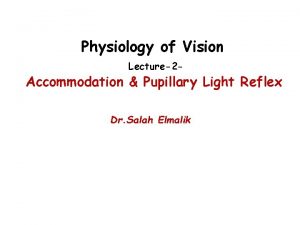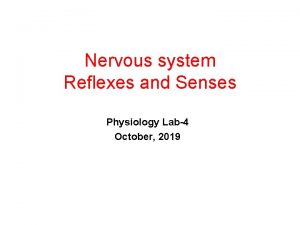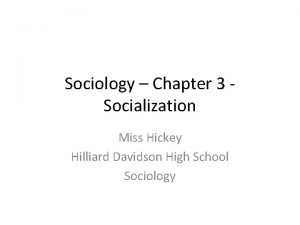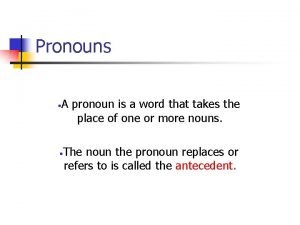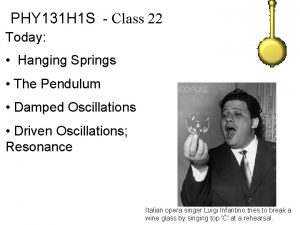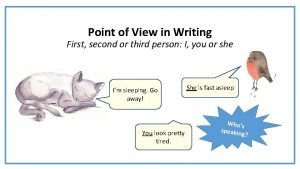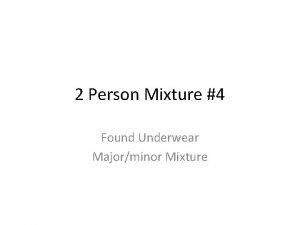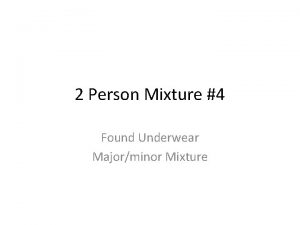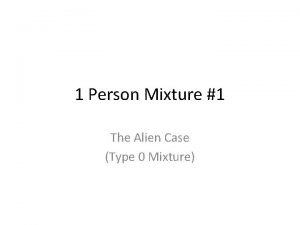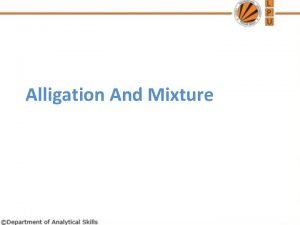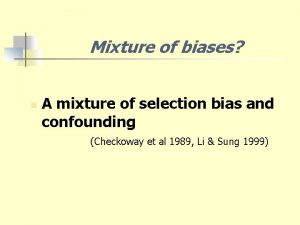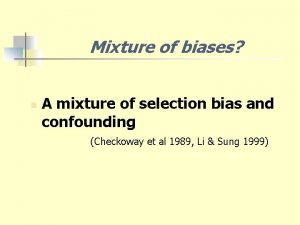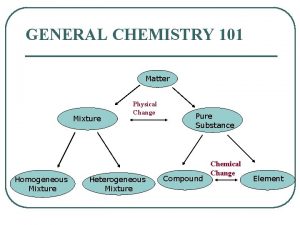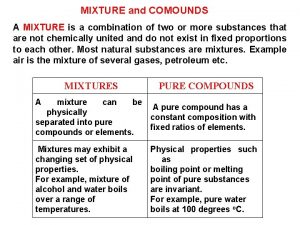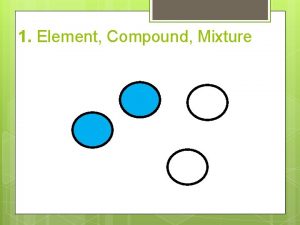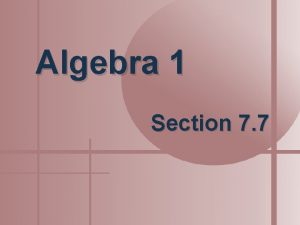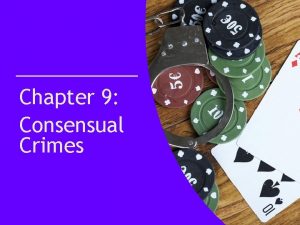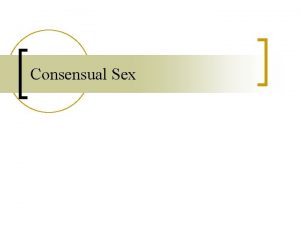3 Person Mixture 3 The Hickey Case Consensual


































- Slides: 34

3 Person Mixture #3 The Hickey Case Consensual or Suspect? ?

Scenario • The event occurred in a hotel room closet where Victim went to pass out in peace • There were a total of 5 people “socializing” that night • But, she was pretty sure it was a guy that had sex with her in that hotel room closet • A condom wrapper was found in the closet

Scenario • Kit was negative for semen, condom used? • But, Victim had a hickey on her neck • Victim says she “messed around” with another girl, but “nothing really happened” • She says she would “never make out with a girl” but she was really drunk • Evidence is a swab of the hickey on V’s neck

The Egram

The Confusion • I’m getting conflicting information from the investigator • I can’t tell if the other girl will be considered a “consensual” partner or another suspect • They refer to her various ways in the supporting documentation • Case happened on the other side of the world, so it’s hard for me to call the Investigator

The Confusion • The defense may argue the other girl was at least a consensual “make out” partner to advance their theory that Victim was “in the mood” and it was consensual • Who knows? Perhaps Victim may claim assault against the other girl, making the other girl a suspect • So I decide to hedge my bets and prepare to do it both ways

Start the Interpretation • • Start by hiding C? and S profiles Apply Victim reference Set to 3 people Autocall references – List foreign box – View call report

Start the Interpretation • We’re going to discuss some things about some loci, then I’m going to do a whole bunch of clicking to get the profiles interpreted/deconvoluted • Hopefully, I’ll explain it well enough during the discussion that you’ll follow it easily enough • If not, someone yell at me and I’ll do so

Start the Interpretation • Here’s where we start (1 option only at D 8) We learned: V is midlevel There is a Major Male is minor ≈5% (We knew that due to small Y) We could have eyeballed it Don’t worry about these names, it’s just the default for 3 people

Interpret As Two Unknowns Present • So here’s a novel idea based on: – Several loci with no minor visible alleles – Minor is <10% apparently – With “good” data like this, “typical” mixture proportion variation falls into a 10% window – Minor is within the “margin of error” • Forget about the minor and just worry about the Major and the minor Major (V) • But we won’t switch to 3 person

Interpret As Two Unknowns Present • At the following loci you can easily call the Major because the minor Major is the profile of the Victim (her own neck swab) • In fact even though there are multiple options for contributor combinations, the center section is the same in every option • (So you know what the Major type is)

Interpret As Two Unknowns Present D 21 (Example) THO 1 D 7 D 3 TPOX D 19 No confusion about Major at these loci in calculator Most of these we can “eyeball” pretty well

Interpret As Two Unknowns Present • Start at D 21 • V is 29, 30 • The center section below will always be the major

Interpret As Two Unknowns Present • Every center option requires 28, 30. 2 for major • Also minor <10%

Interpret As Two Unknowns Present D 21 (Example) THO 1 D 7 D 3 TPOX D 19 No confusion about Major at these loci in calculator Most of these we can “eyeball” pretty well

Interpret As Two Unknowns Present • There are 3 loci with same type in all contributor options, but some are “not excluded” types so no P/PHR info (D 18) • But, there is a subtle pink highlighting to some types that means “RFUs below HT” - minor So ignore pink

Interpret As Two Unknowns Present • 3 loci with common foreign type to all options • Is always the major, or at least no pink flag D 18 D 16 D 5

Interpret As Two Unknowns Present • CSF requires shared types • Correct for stutter, and the 11, 11 is the major type • Plus the “eye ball” method helps

Interpret As Two Unknowns Present • Three loci have quite a few options in calculator (we stayed in 3 person mode) FGA v. WA D 13

Interpret As Two Unknowns Present • FGA - all options but the bottom one have a 21, 22 Major • But that option is kind of 1: 1: 1 Plus you can eyeball it and tell you have a 21, 22 but no clue about third minor person

Interpret As Two Unknowns Present • v. WA – Even though lots of options it’s really a no brainer knowing V is 16, 16 Major is 17, 18 Only the options for a 17, 18 have tiny minor for the 3 rd person

Interpret As Two Unknowns Present • • D 13 – V is 11, 13 Appears to be lots of options But 13, 13 no good for a major If 11, 11 major, then V proportion = 79% not 30 ish So V and Major are both 11, 13 contributors

Interpret As Two Unknowns Present • We’ve ended up with a full deconvoluted major profile • If you assume the V, you may be able to “eyeball” and do it also • But we used phr and p information to do it

Interpret As Two Unknowns Present • Now we check to see if we have a match • Just for fun, let’s match backwards • We’ll set the deconvoluted major profile as the reference and back check against the known samples • (This works well in big cases with mulitple known references)

Interpret As Two Unknowns Present • The deconvoluted profile is a perfect match against the C? sample • (Our girl that may or may not be a consensual or a suspect)

Interpret As Two Unknowns Present • Single source stat • 1 in 346 Sextillion • But check Hispanic – Septillion!

The Third Contributor • We have a low level male contributor that we’ve ignored so far • But we decided he was so low that he didn’t have any bearing on the other two contributors • So treat it as a Type 0 Mixture – It’s just a partial profile – Probably a bunch of Allele, Any’s

The Egram

The Third Contributor • 2 minor alleles at D 8, so we know the type • D 3 and D 19 >300, but test for stutter – Obligate function? – If I forget to check stutter for D 3 and D 19 when we click it into the Questioned profile, remind me • Use Allele, Any’s – In most 3 person “real life” mixtures I’ll probably default to Allele, Any for anything close to 300 as they’re much more unpredictable than a 2 person mixture near HT

The Third Contributor • 4 loci with no minor alleles showing • D 13 and v. WA amp pretty well, so maybe no drop out (D 13 has only 2 alleles, can do 2 Anys) • FGA doesn’t always amp well and is largest red locus • CSF is very large locus

The Third Contributor • Final stat (almost, v. WA is 90% of population, not 100%) • 1 in 85. 3 Million (It should be 94. 1 Million)

The Third Contributor • Let’s check to see if suspect fits that minor

Final Thoughts • This was actually really easy mixture, with an obvious major and obvious partial profile • Those loci with no minor alleles called – LR would use those loci – Why can’t we use them in RMP? – It makes no sense not to – But remember, sometimes LR will favor defense at loci where there is drop out (FGA) – RMP can’t do that, but becomes “Neutral”- 1. 00

Final Thoughts • But RMP is much more powerful than perhaps you realized • Are you sure you need LR (with drop out? ) • (It would be nice to have it though… Stand by) • Oh yeah, and the program rounds to 1. 0 for any RMP that adds up to >1. 0
 Nursing diagnosis of lung cancer
Nursing diagnosis of lung cancer What is this image
What is this image Accommodation pupillary reflex
Accommodation pupillary reflex Consensual reflex
Consensual reflex Decision making unit gatekeeper
Decision making unit gatekeeper Reflejos
Reflejos Katrina hickey
Katrina hickey Chapter 3 socialization
Chapter 3 socialization Kristen heinrich
Kristen heinrich Max hickey
Max hickey Brenna hickey
Brenna hickey Connolly & hickey historical architects
Connolly & hickey historical architects Third person point of view
Third person point of view First second and third person
First second and third person Person person = new person()
Person person = new person() Singular 1. person
Singular 1. person Is 14 karat gold homogeneous or heterogeneous
Is 14 karat gold homogeneous or heterogeneous Best worst and average case
Best worst and average case Person a and person b
Person a and person b External conflicts in fahrenheit 451
External conflicts in fahrenheit 451 One persons trash is another persons treasure
One persons trash is another persons treasure Formal and informal writing examples
Formal and informal writing examples A person swings on a swing when the person sits still
A person swings on a swing when the person sits still Private string name java
Private string name java When moving a person in segments, what do you move first?
When moving a person in segments, what do you move first? First person vs third person writing
First person vs third person writing Chapter 18 safely moving the person
Chapter 18 safely moving the person Soldier's heart answer key
Soldier's heart answer key Hi steve what are you doing
Hi steve what are you doing Person-job fit and person-organization fit
Person-job fit and person-organization fit An account of a person's life written by that person
An account of a person's life written by that person Vẽ hình chiếu đứng bằng cạnh của vật thể
Vẽ hình chiếu đứng bằng cạnh của vật thể Quá trình desamine hóa có thể tạo ra
Quá trình desamine hóa có thể tạo ra Các môn thể thao bắt đầu bằng tiếng nhảy
Các môn thể thao bắt đầu bằng tiếng nhảy Hát kết hợp bộ gõ cơ thể
Hát kết hợp bộ gõ cơ thể


